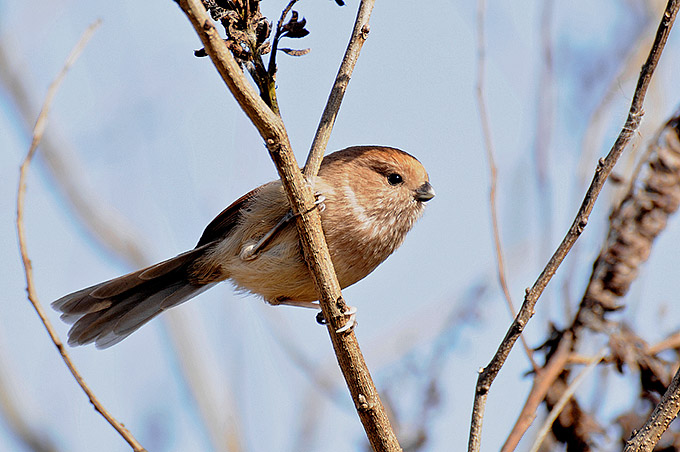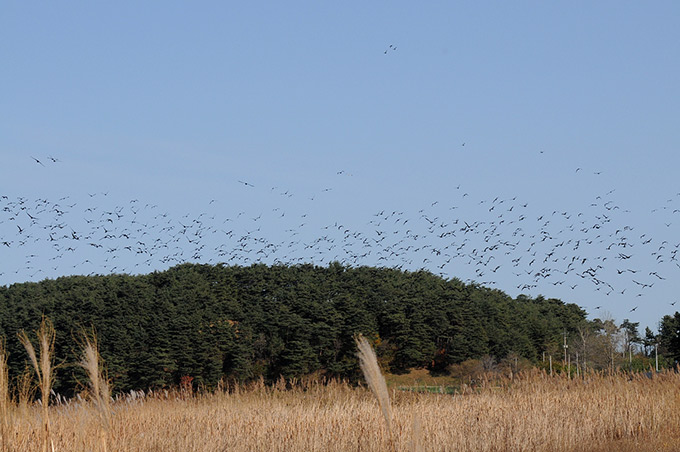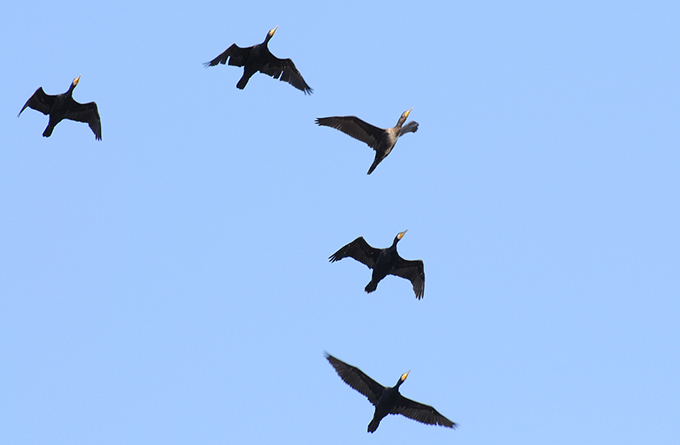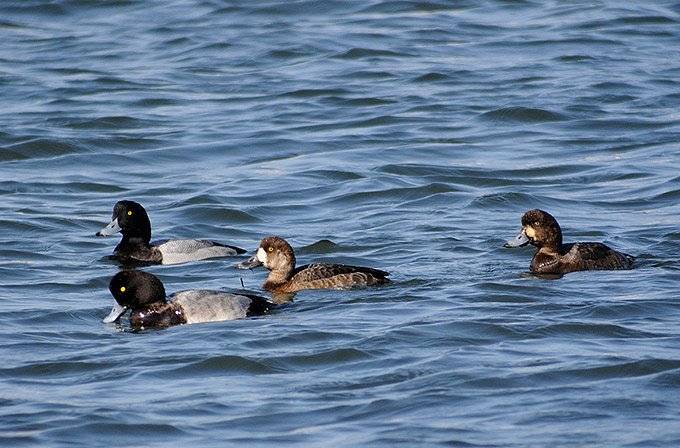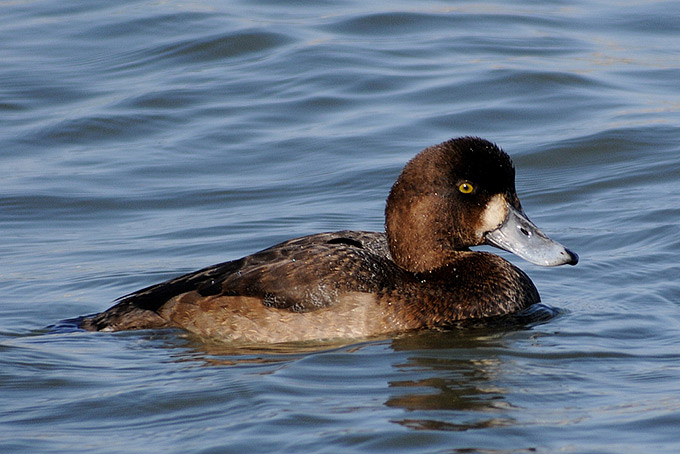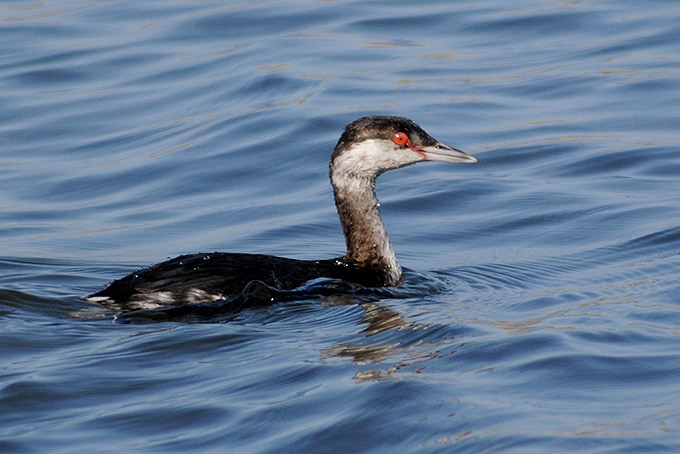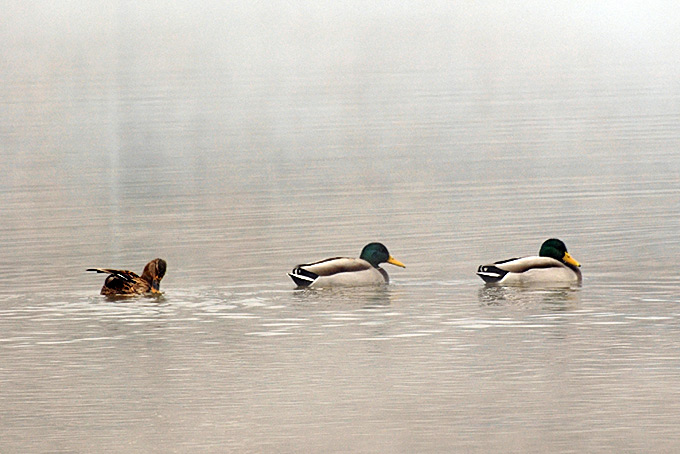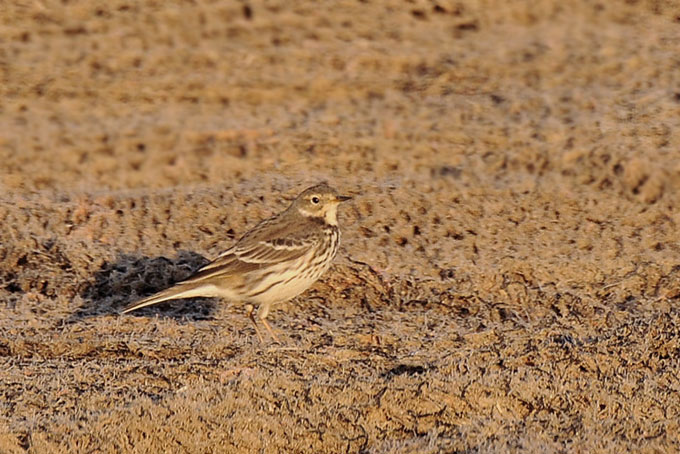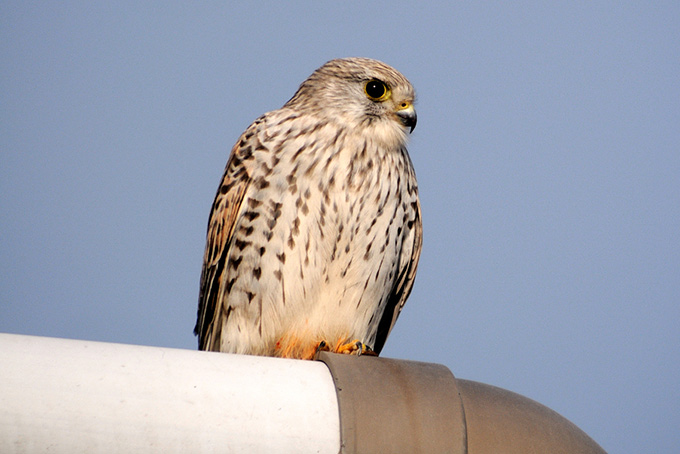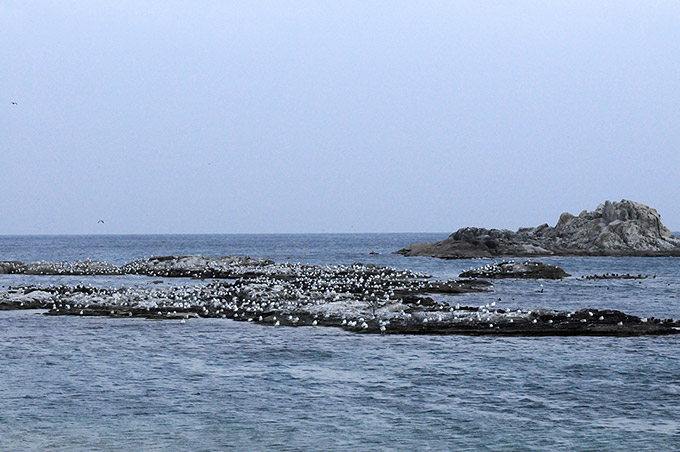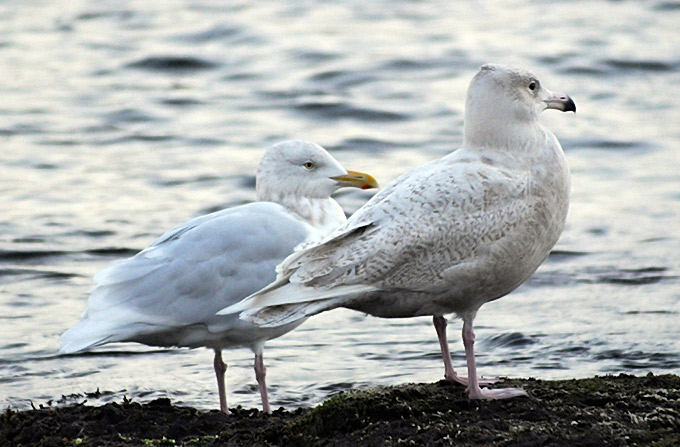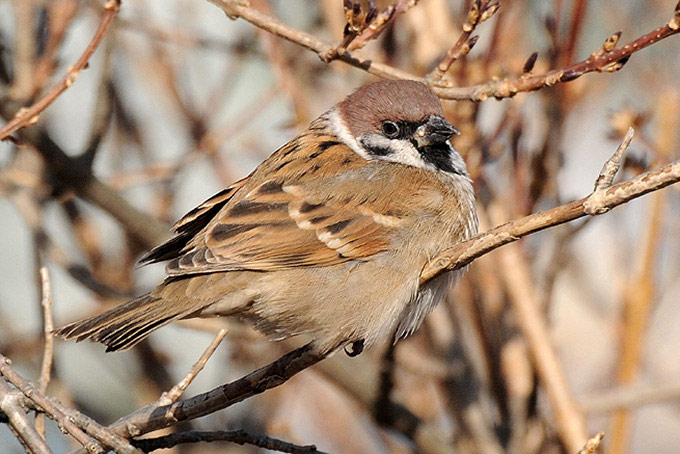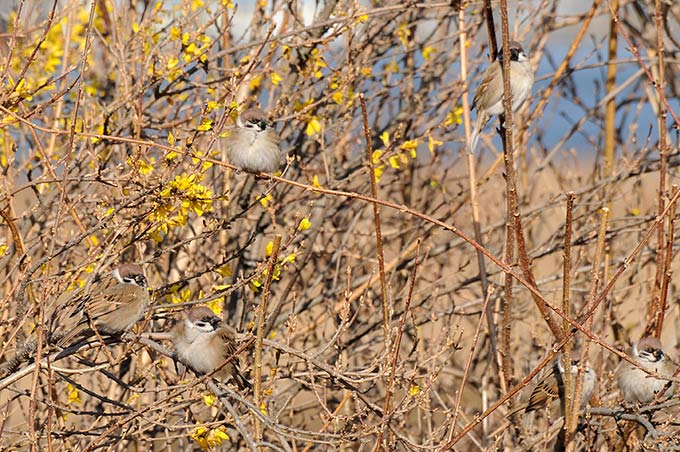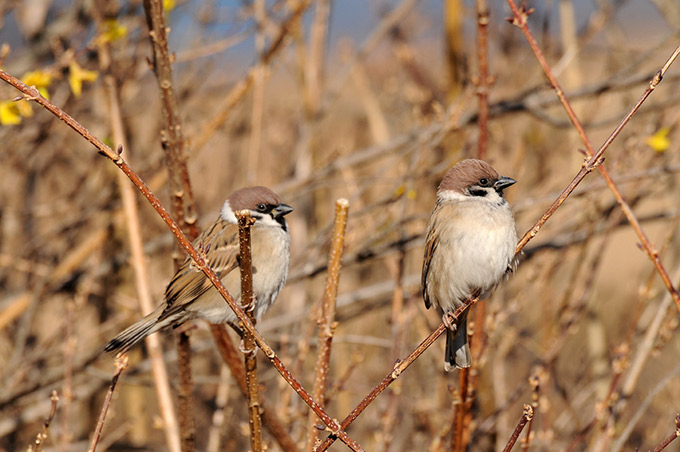 | E-mail to Birds Korea |
 | KWBS |
in the Region
 | The Oriental Bird Club |
 | BirdLife International (Asia) |
December
Periods of intense cold alternate with milder spells. In the coldest winters maxima are often below freezing; in milder years (increasingly regularly) maxima often reach 10°C in Seoul: a few lingering autumn migrants can still sometimes be found as well as huge numbers of wintering waterbirds.
A great time for a winter bird tour or a couple of days in the right areas. Saunders’s Gulls are widespread, while very small numbers of Relict Gulls also start to appear at a number of sites, especially in cold winters. Scaly-sided Merganser move southward onto unfrozen rivers, while numbers of Baikal Teal remain at their peak - often dispersing southward from Seosan, along with large numbers of Greater White-fronted and Thick-billed Bean Geese with the onset of subzero temperatures. Taiga Beans too can be found in the low thousands at Woopo, Joonam and in the Nakdong Estuary in the southeast, the mildest part of the mainland. Raptors include good numbers of Cinereous Vulture in the Cheorwon Basin, where they are often joined by White-tailed and even Steller’s Sea Eagles, while cranes (Red-crowned, Hooded, and White-naped), also remain at key sites. Passerines include occasionally numerous Brambling, mixed flocks of Naumann’s and Dusky Thrushes and in some winters large numbers of Siberian Accentor. Species such as White’s and Pale Thrush, Japanese Bush Warbler, Red-flanked Bluetail and Japanese White-eye also remain in reasonable numbers on Jeju Island and in the far southeast.
Highlights in recent years have included irruptions of Chinese Nuthatch, and records of Sandhill Crane, Siberian White Crane and Cackling Goose. Recent national firsts have included Grass Owl in 2003 and Meadow Pipit in 2006, both on Heuksan Island, and Korea’s first Lesser Black-backed Gull at Yubu Island in the Geum Estuary in 2008.
(The following records are a compilation of our own sightings and records sent in by other observers. As well as being posted on the Birds Korea website(s), selected records are also forwarded to other Korean-language birding websites; records of threatened species are arranged and forwarded to Birdlife International and national authorities when appropriate; flag images and records are passed to bodies responsible for their coordination throughout the flyway; and all records sent to us are used to compile annual reports and to support the evolving understanding of the status of many of Korea’s birds.)
Ansan, December 25
At the frozen upper reaches of Shiwha, raptors patrolling the reedbeds included an Upland Buzzard, Northern Goshawk (which actually hovered in the headwind briefly), and a Rough-legged Buzzard- which was performing aerobatics with a Large-billed Crow.
Otherwise noteworthy was a gathering of 100+ Mandarin Duck and 8 Hawfinch. Also present e.g. c.250 Mallard, several hungry and approachable Daurian Redstart, a Grey-headed Woodpecker, a Eurasian/ Northern Skylark,c.10 Azure-winged Magpies, an Eastern Buzzard, Eurasian Sparrowhawk, and Dusky & Naummann's Thrushes.
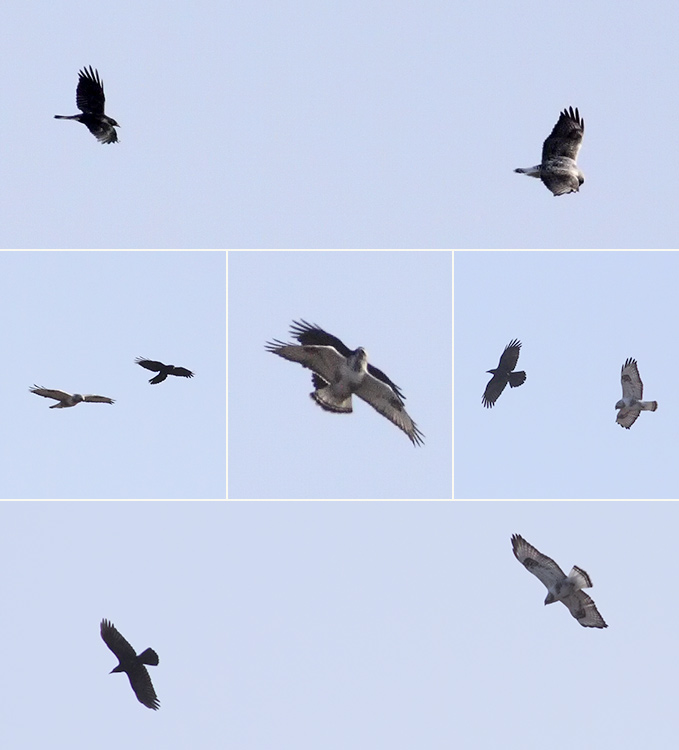
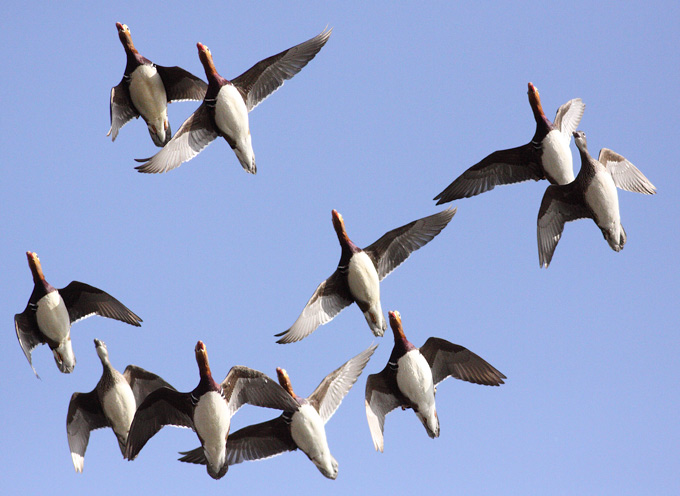
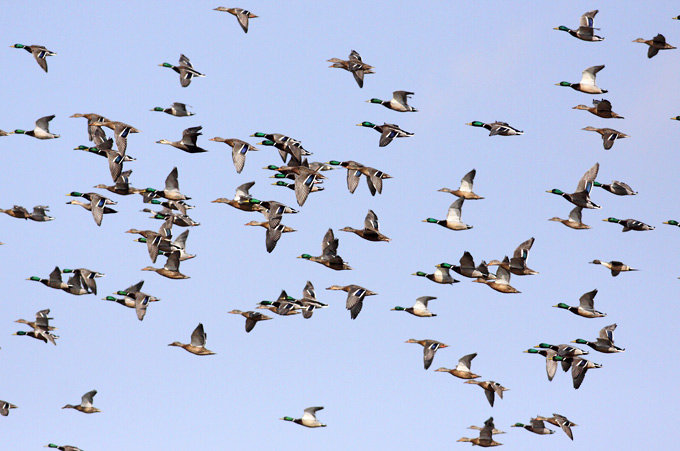
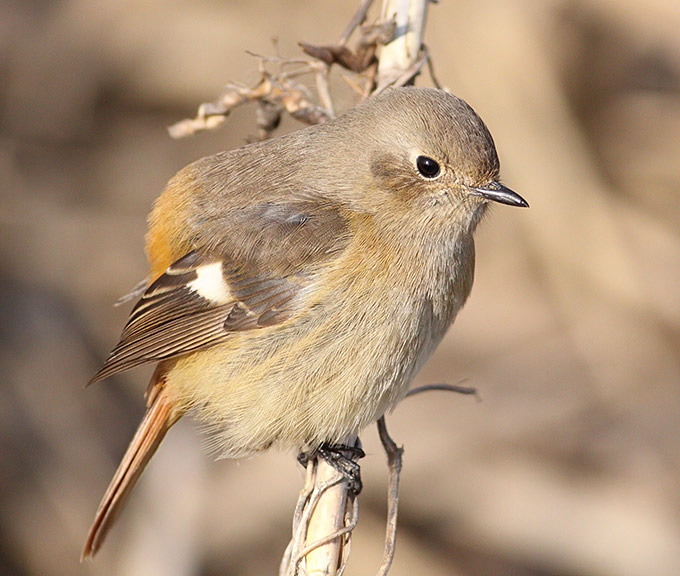
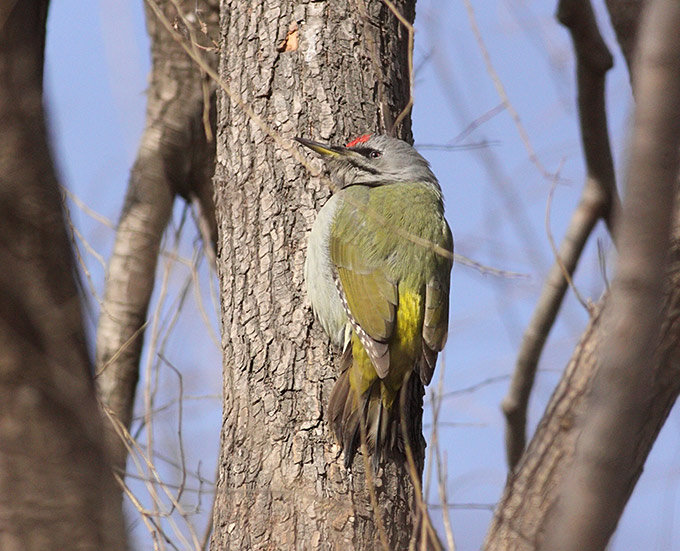
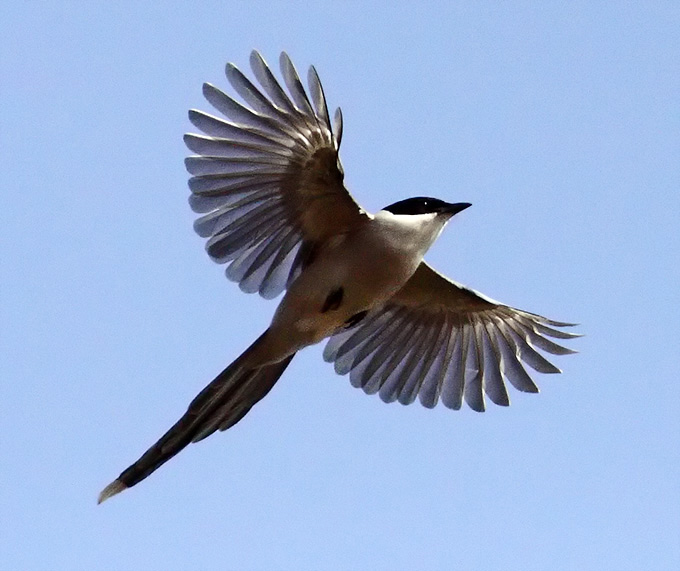
Suncheon Bay, December 20
On a second visit to the Eco-Park, the number of Hooded Cranes had increased, and I counted over 250 in one large flock on the rice stubble. The boat rides have stopped for the winter, and, seen from afar, the estuary was more sparsely populated, including only about 30 Whooper Swans and 50 Bean Geese. A Hen Harrier and a Northern Goshawk were on patrol along the paths and reedland edges.Outside the park, further west in the bay, I saw 3 Eurasian Spoonbills feeding in another river mouth, and in Seunjeung village many birds enjoyed the fine windbreak of old trees along the shoreline, including Dusky Thrushes, Hawfinches, Grey-headed and Japanese Pygmy Woodpeckers.
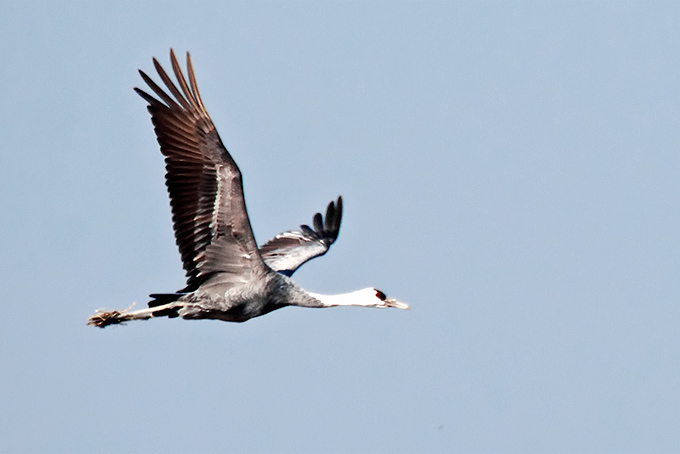
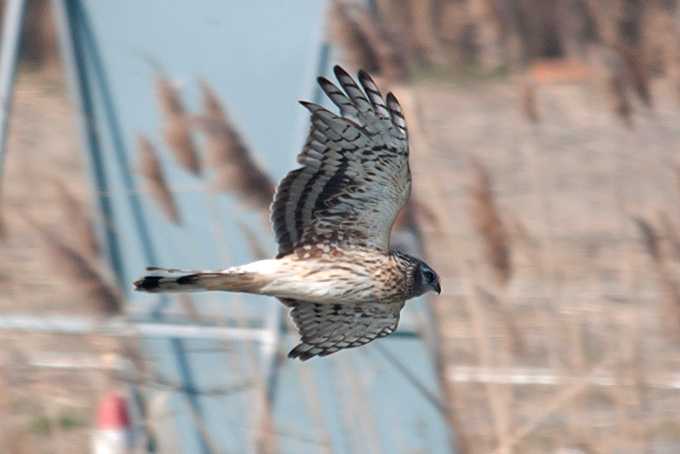
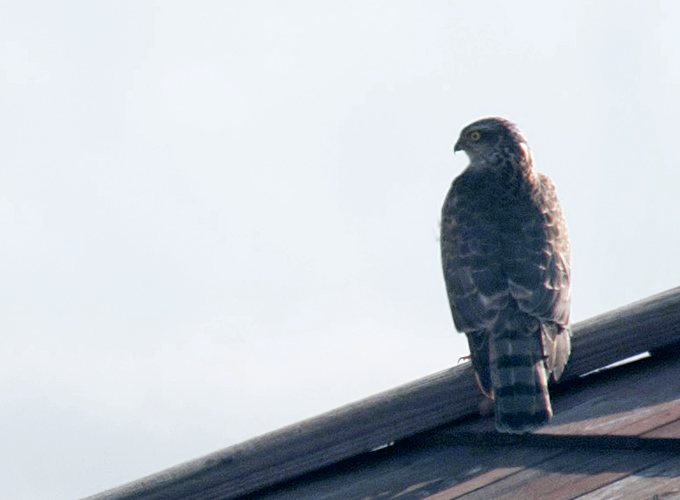
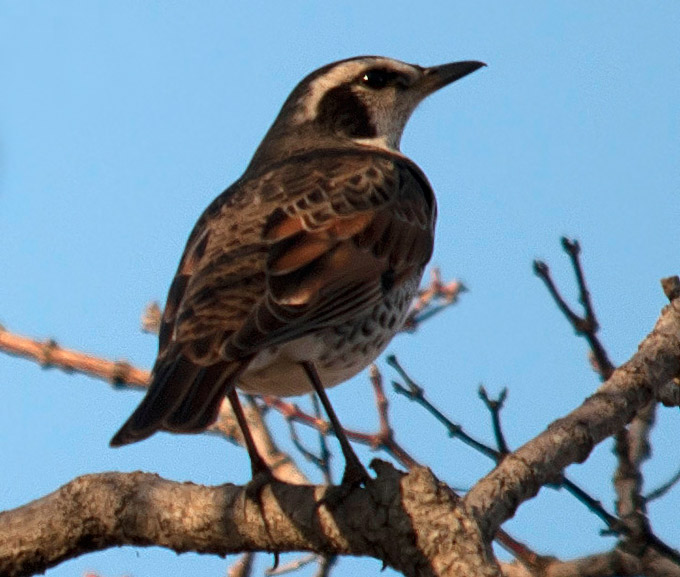
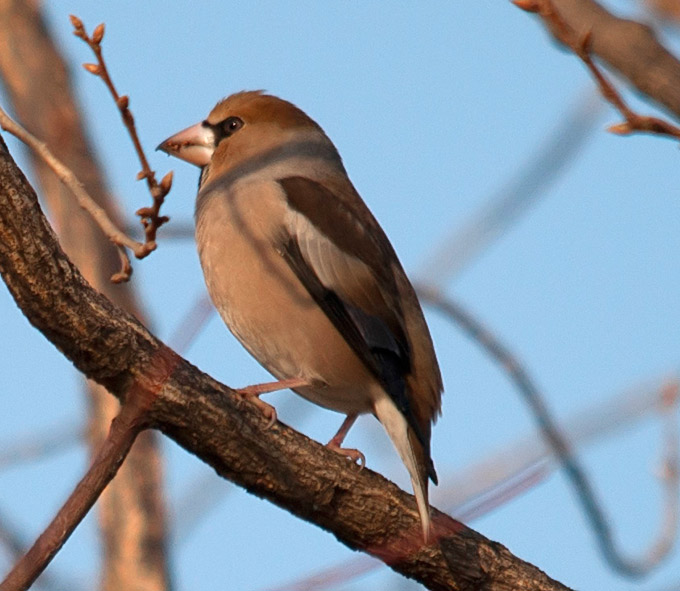
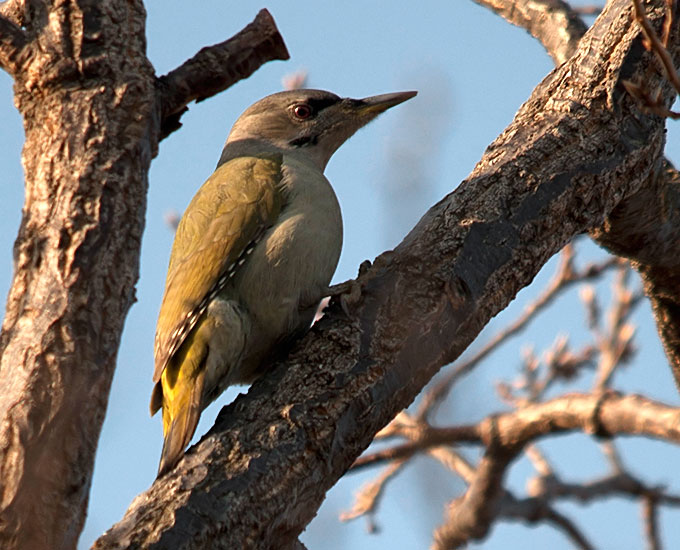
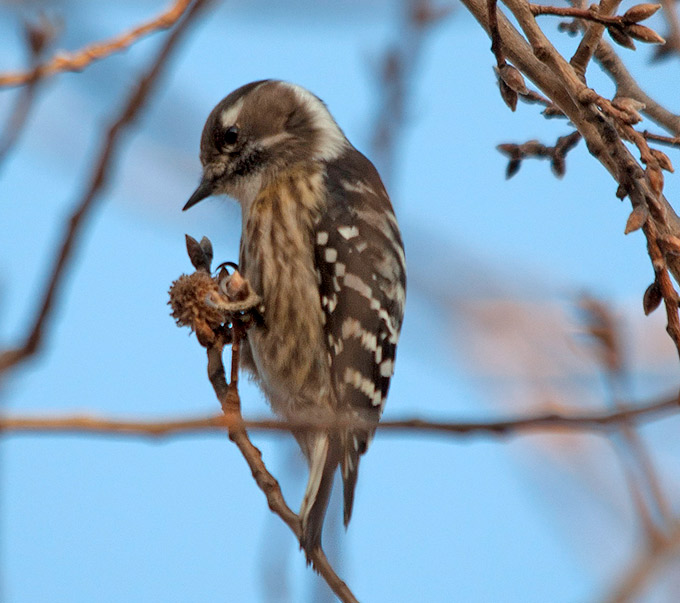
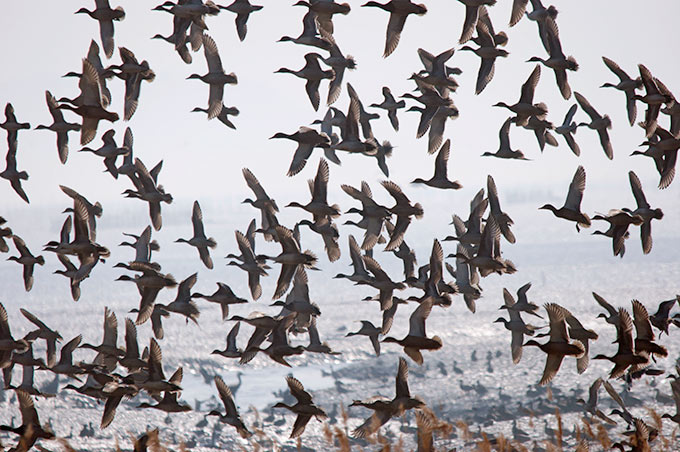
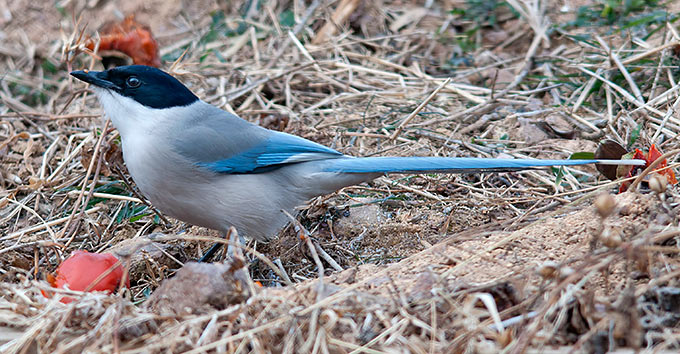
Yongnang Lagoon and Goseong County, December 19
With the northern lagoons, Hwajinpo and Songji, freezing over during the week, many birds were forced to move south. I visited Yongnang Lagoon in Sokcho this morning with a couple of friends and saw more birds there than I ever have before. Most of the lagoon still had open water but there was some ice at the western end. Birds were spread all over the lagoon. There were considerable numbers of Greater Scaups, Common Mergansers, Common Gulls, Mallards and Eurasian Coots. There were some Spot-billed Ducks, Common Goldeneyes, Smew, Tufted Ducks, Great Cormorants, Vega Gulls, Slaty-backed Gulls and Black-headed Gulls as well. In small numbers I saw Great Crested Grebe, Little Grebe, Black-necked Grebe, Tufted Duck, Wigeon and Gadwall. A lot of birds were resting on the ice including many gulls and ducks, and some Grey Herons, Western Great Egrets, Eastern Great Egrets and Intermediate Egrets.
Just before lunch we went to Munam Harbour to look at the birds on the rocks and the beach. Plenty of Common Gulls, Black-tailed Gulls, Vega Gulls, Slaty-backed Gulls and a couple of Glaucous Gulls. There were also Mallards, Spot-billed Ducks and 3 male Harlequin Ducks. I saw 3 Sanderlings on the rocks too. A Black-necked Grebe was in the harbour. On the rocks further out I could see cormorants that I think were Temminck's and Pelagic Cormorants.
We went to Wanggok Village for lunch driving around the west side of Songji Lagoon. A lot of the surface ice had thawed but there were few birds on the lagoon. We did see a Common Pheasant on a field near the road and a Common Buzzard on an electicity pole. After lunch I drove around Songji Lagoon again and saw a White-tailed Eagle.
Later in the afternoon I found another Harlequin Duck near the rocks north of Geojin. There were Red-breasted Mergansers, Great Crested Grebes, Spot-billed Ducks, Vega Gulls, Slaty-backed Gulls, Black-tailed Gulls and a Temminck's Cormorant on and around the rocks too. A quick drive around the southern side of Hwajinpo Lagoon saw that it was still mostly covered in ice. There were a few small areas of open water though and I saw some Bean Geese, Mallards, Eurasian Coots and Great Scaups in and around them. A Northern Goshawk flew over a fallow rice field sending over 300 White-fronted Geese into the air. I counted 188 of them that landed on the ice, but some of them flew away out of sight.
Overall a good weekend of birding.
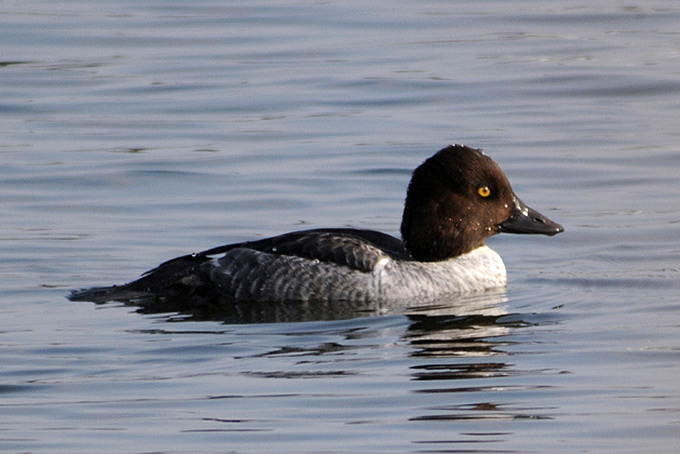
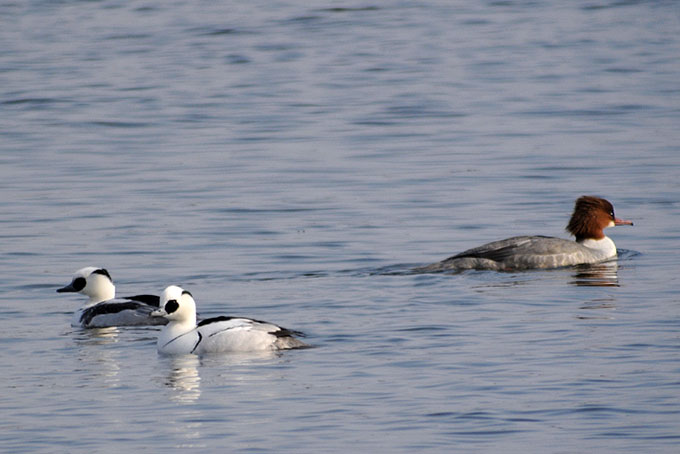
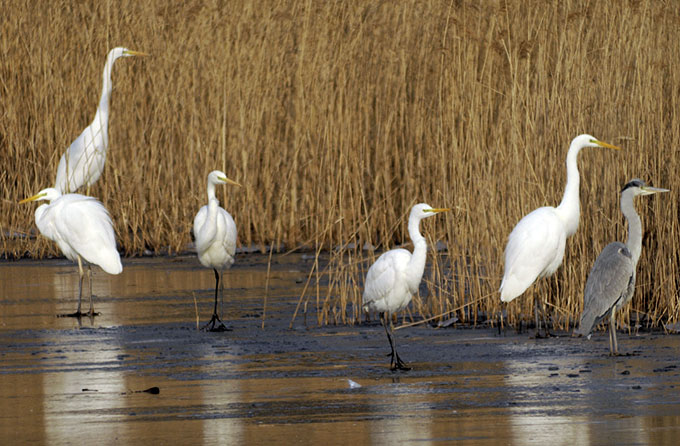
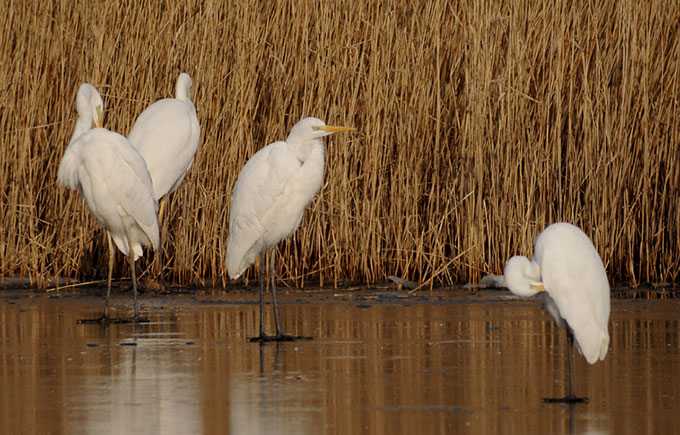
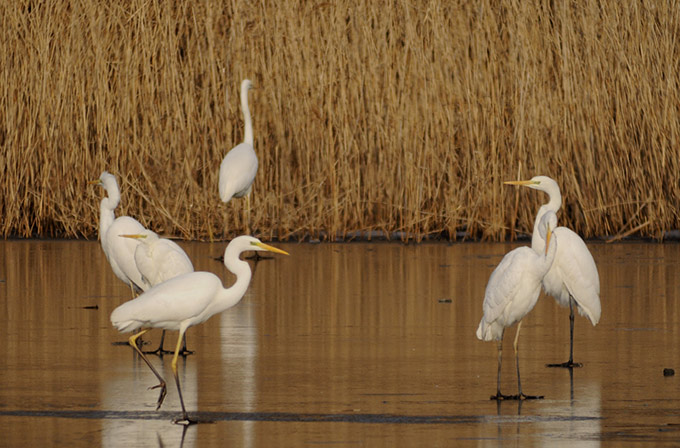
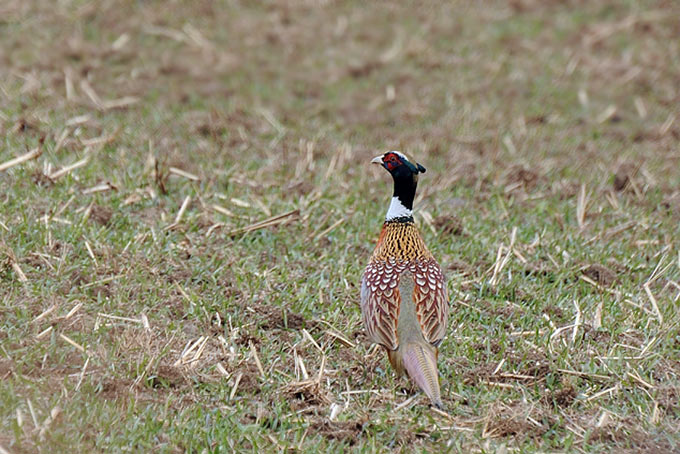
Northeast Gangwon Province, x Namdae Cheon, Cheongcho Lagoon and Ganseong - Nam Cheon, December 18
It has been a cold week in the northeast part of Gangwon Province causing the coastal lagoons and slow flowing stream to freeze over. Waterbirds have been forced into smaller spaces where there is still some open water.
I went to Nam Cheon near Ganseong on Friday after sunset and counted about 700 Mallards, over 100 Spot-billed Ducks, some Eurasian Teals and Common Goldeneyes. Amongst them was an unusual bird that looked like a Mallard/Spot-billed Duck hybrid. Unfortunately it was too dark to get photographs of it. I returned to Namdae Cheon Saturday earlier in the afternoon but I couldn't find the unusual bird.
Saturday morning, 18 December, I visited Namdae Cheon near Yangyang. Most of the lagoon near the sea was covered in ice, apart from small area at the rivermouth. There were Common Goldeneyes, Common Mergansers and Mallards there. Not far away on the Sandbar was a Peregrine Falcon perched on a stick. Upstream from Naksandae Bridge there was some open water on the northern side of the river. There were numerous ducks in the water and on the ice including Mallards, Common Goldeneyes, Spot-billed Ducks, Greater Scaups, Eurasian Teals, Smew, Pochards and a Falcated Teal. There were some Coots and Little Grebes as well. The birds took flight when a young White-tailed Eagle flew over and landed on the ice.
In the trees and grass near the river I found Pallas's Reed Buntings, Great Tits, Daurian Redstarts, Brown-eared Bulbuls and Yellow-throated Buntings. A Northern Goshawk flew low over the grass disturbing the buntings. On the cultivated fields beside the river there were some Far Eastern Skylarks. As always they were very alert and wary but I managed to get photos of a couple of them using my scope and camera adaptor. I saw 2 Eurasian Bitterns east of the sculpture and sports park.
In the early afternoon, 18 December, I had a look at the birds on Cheongcho lagoon in Sokcho. Most abundant were Common Gulls with Black-tailed, Vega and Slaty-backed Gulls as well. Mallards dominated the ducks with Spot-billed Ducks, Greater Scaups, Common Goldeneyes, Pochards, Pintails, an Eurasian Teal and a Baikal Teal. There were Great Crested Grebes, Great Cormorants, Eurasian Coots, a Little Grebe, Grey Herons and Western Great Egrets on and around the lagoon too. The gulls took flight when a White-tailed Eagle flew over and later an Eurasian Sparrowhawk flew by. 35 Eurasian Magpies flew over the lagoon.
On my way back to Ganseong I drove around the west side of Songji Lagoon, but there wasn't much to see because it was almost completely covered with ice.
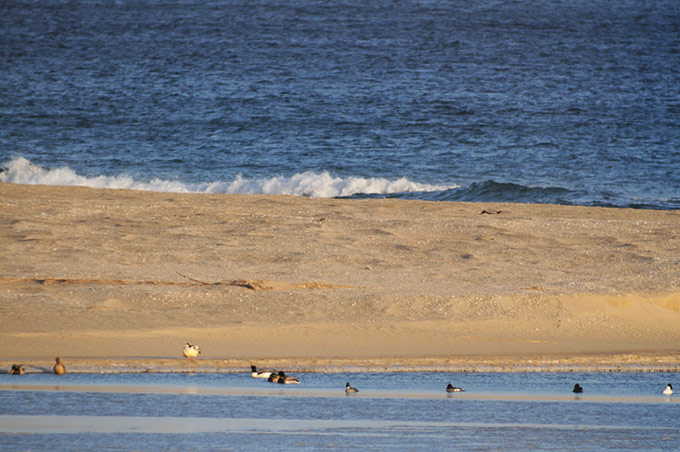
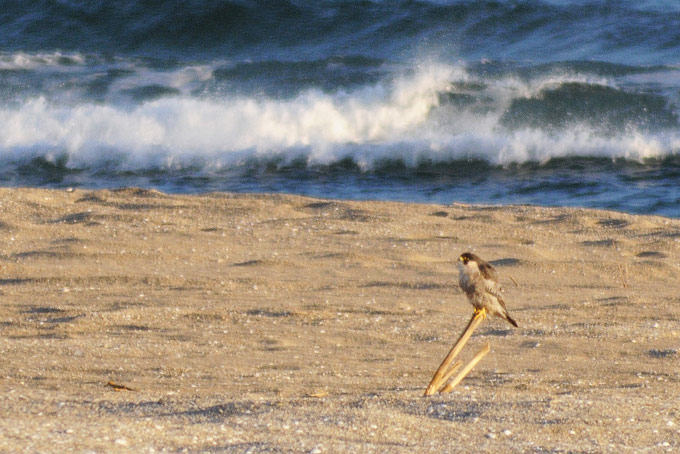
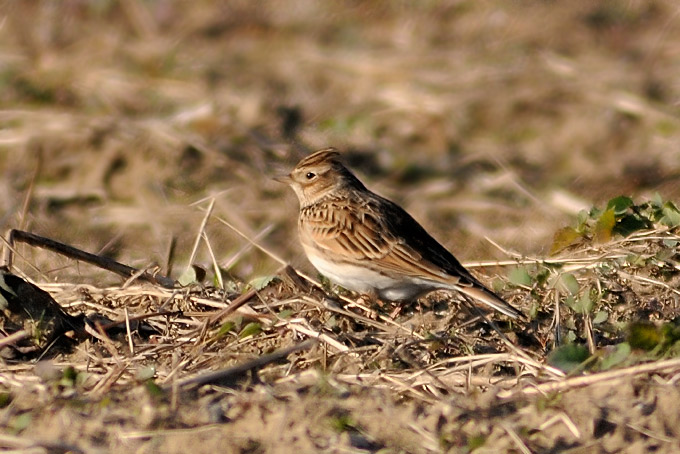
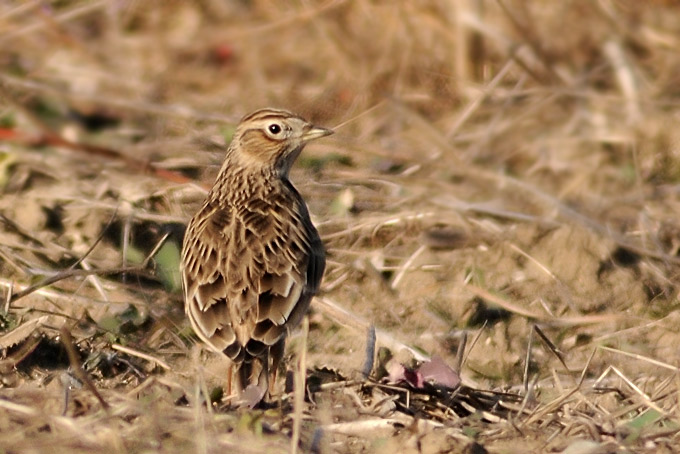
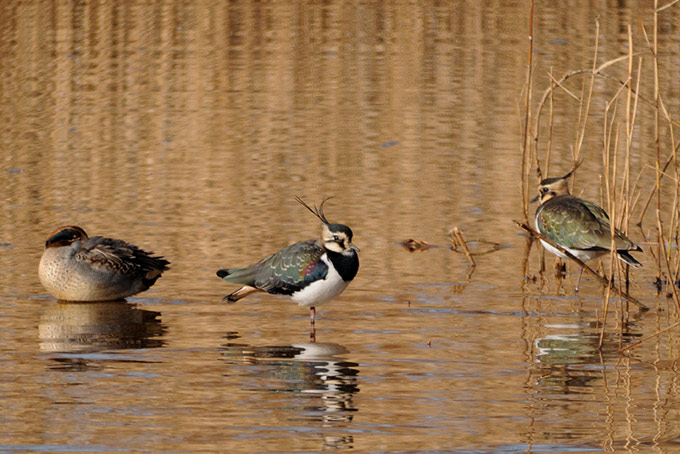
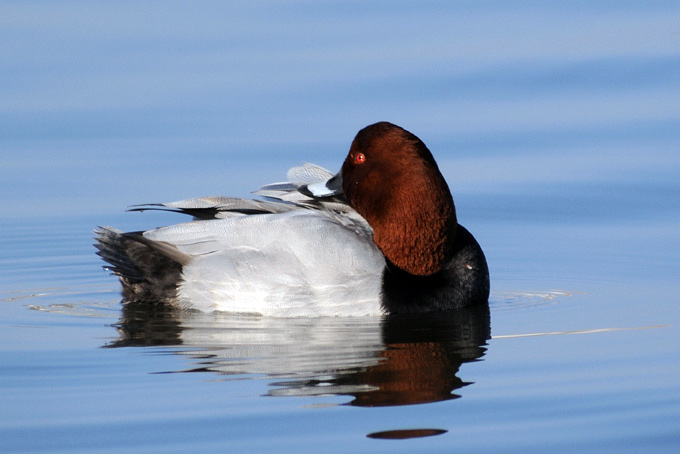
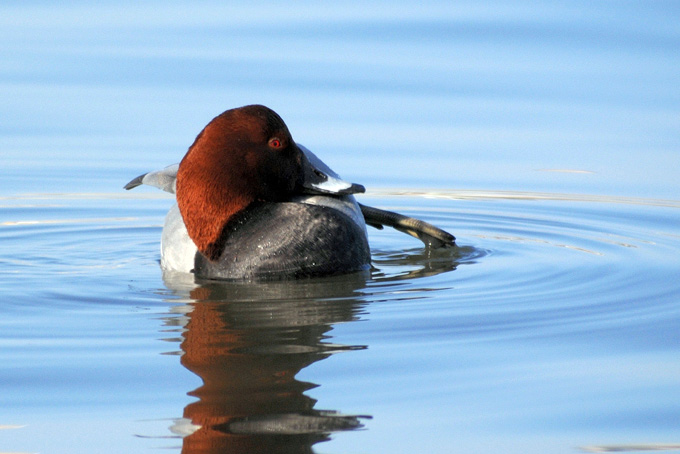
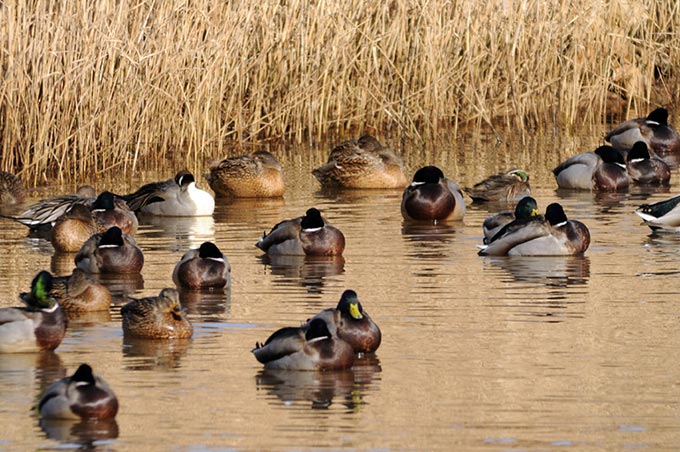
Jeju island, January 12
A crisp but pleasant day for coastal birding on Jeju. Along the coast near Sehwa, several Red-breasted Merganser, two dozen Temminck's Cormorant, and 8 Buff-bellied Pipits. At Hado, 12 Black-faced Spoonbill grouped with about twice as many Great Egrets. The winter ducks have arrived in force - 12 Common Shelduck, 70 Mallard, several hundred Spot-billed Duck, about 200 Gadwall, a similar number of Eurasian Wigeon, and about a hundred Tufted Duck. Also at Hado were perhaps 60 Coot and 16 Northern Lapwing.
At Ojori Lake a similar numbers of ducks, with the addition of a dozen or so Pintail, a half-dozen Pochard, 15 Shoveler, and 9 Falcated Teal. Near Seongsan, the sky was darkened by two massive clamours of Rooks, the two totaling probably 3,000 birds! At one point hundreds of Rooks mobbed an Eastern Buzzard mercilessly, and it was definitely a spectacle. Three more Eastern Buzzards were seen during the day, as were three Common Kestrel, three Western Osprey, and a Peregrine Falcon. At Ojori, 16 more Black-faced Spoonbill huddled. One of them had a white ring on its left leg, and Young Ho suspects it was ringed in Siberia.
Earlier in the week, a Seogwipo park held a half dozen Pale Thrush, a similar number of Dusky Thrush, about two dozen Eurasian Siskin, and a Common Snipe. In a nearby park, I saw a Naumann's Thrush - the first time I've seen one on Jeju. About two dozen Mandarin Ducks were spotted on a quiet stretch of river.
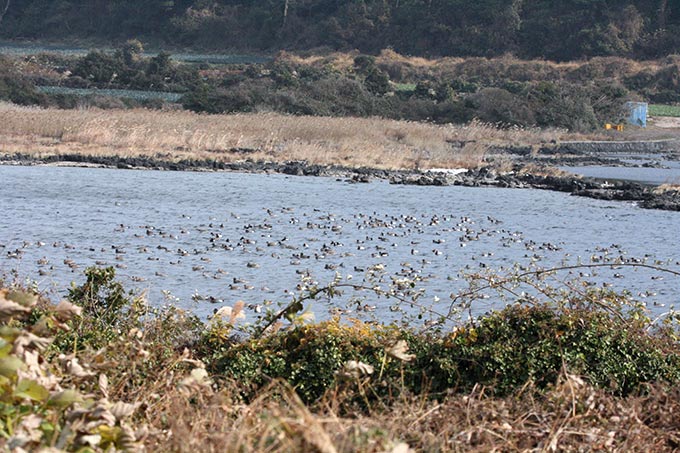
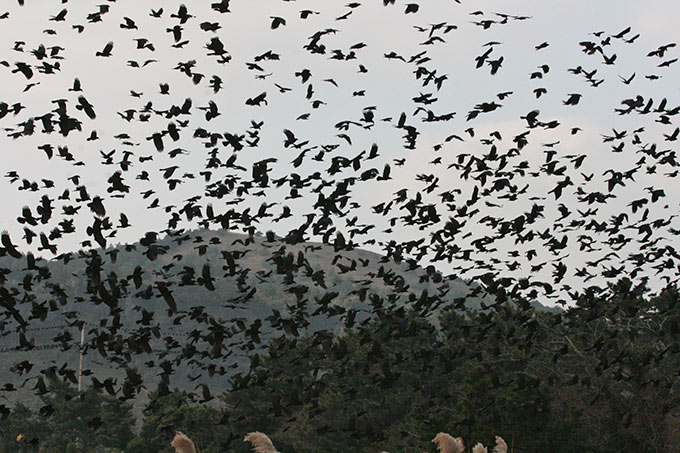
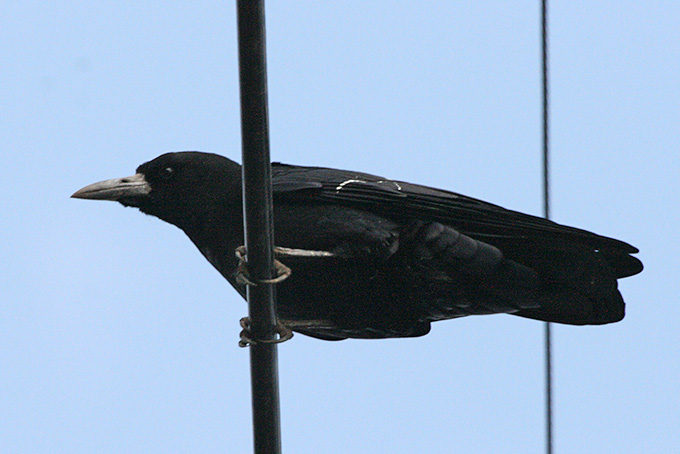
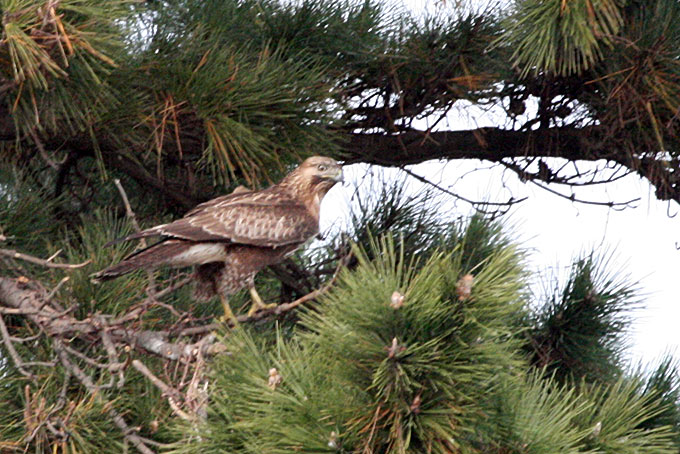
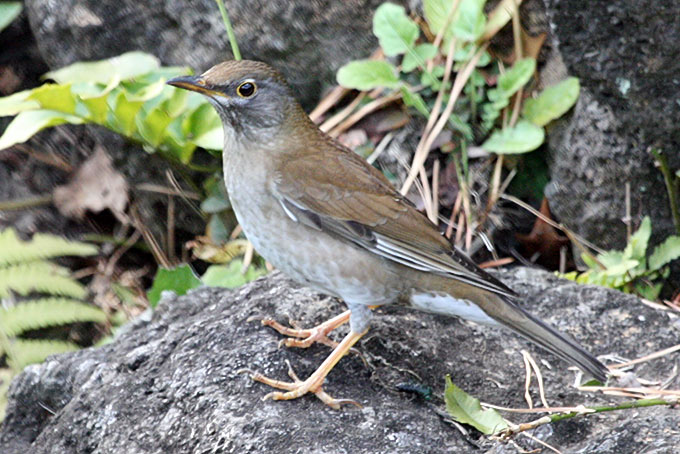
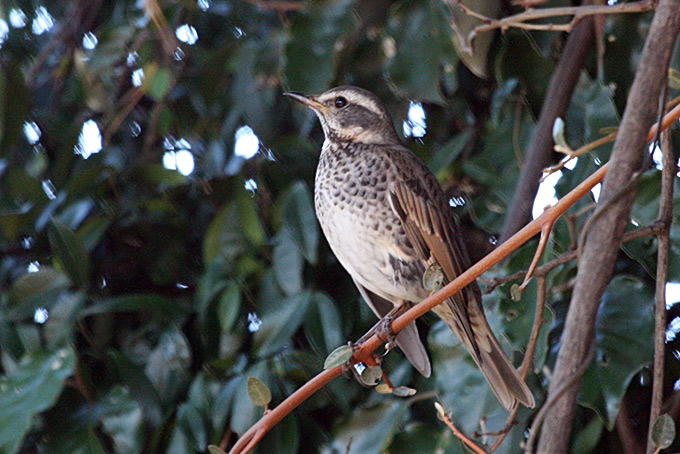
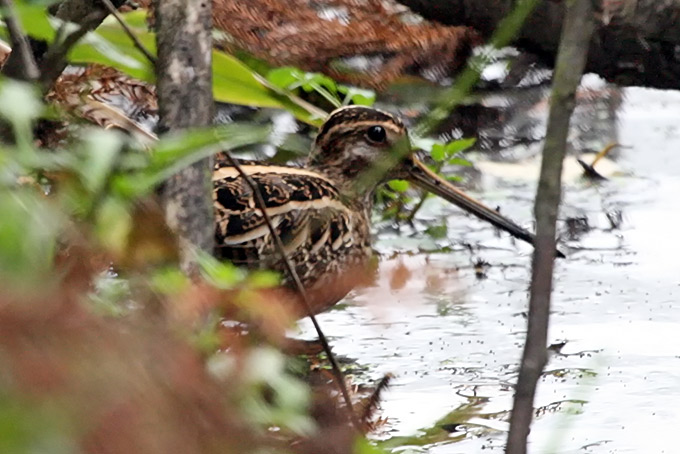
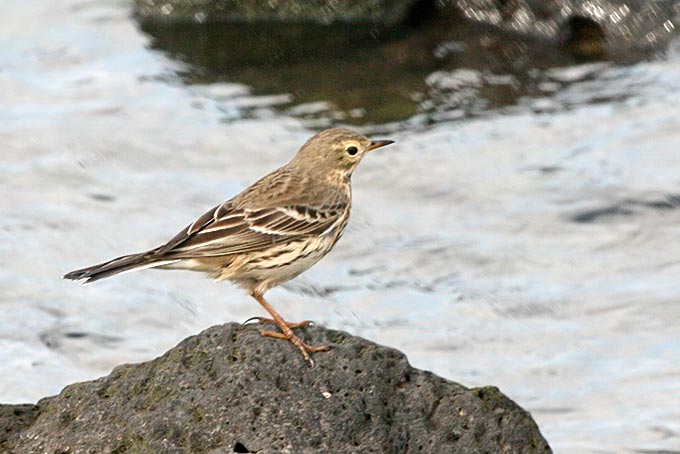
Dadaepo and the Nakdong Estuary, December 12
We spent several hours on a cloudy afternoon focussing on the woodland at Dadaepo and the mouth of the Nakdong estuary. The highlight was fleeting glimpses of both an adult male and a female Grey Bunting in woodland at Dadaepo (DLC only). This was at least my fifth visit to Dadaepo in winter, but only the first time I have connected with this very shy and elusive species. The mouth of the estuary was interesting for raptors with the highlight being at least 3, more likely 4, Western Ospreys fishing and perched on sandbars. They showed well all afternoon and were observed to catch fish on several occasions. Also in the area were 2 Peregrines, a ringtail Hen Harrier, and about 6 Black Kites. In the channels were 3 Black-necked Grebes, 2 Common Goldeneye, a scattering of Red-breasted Mergansers and Great Crested Grebes, and 2 Common Mergansers including one drake. 4 White-naped Cranes flew upriver and there was a gratifyingly high number of Whooper Swans in the area although no counts were made. Single-figure counts of Sanderling and Eurasian Curlew were in the area. We also observed a drake Wigeon with a large and very prominent green crescent from the eye to the nape. This feature initially suggested American Wigeon, but it quickly became obvious that the rest of its plumage was identical to the accompanying Eurasian Wigeon, so we concluded that it was either an unusually marked Eurasian Wigeon or possibly a hybrid American-Eurasian Wigeon.
Junam Reservoir, December 10
The coldest night of the winter so far (perhaps -5C overnight) gave way to a sunny and calm morning with rapidly increasing temperatures as the day wore on. The regular adult White-tailed Eagle has been joined by another; both birds loafed around the mud spit for the majority of the morning, occasionally indulging in petty squabbles with each other or with the attendant Large-billed Crows and Eurasian Magpies. 2 Swan Geese were seen again today, and 41 Eurasian Spoonbills were counted, the highest numbers so far recorded this winter. Finally, as I made my way along the reservoir banks, my attention was drawn to a distinctive call and I was fortunate enough to get superb views of a Siberian Accentor making its way through the low scrub and dead reeds.
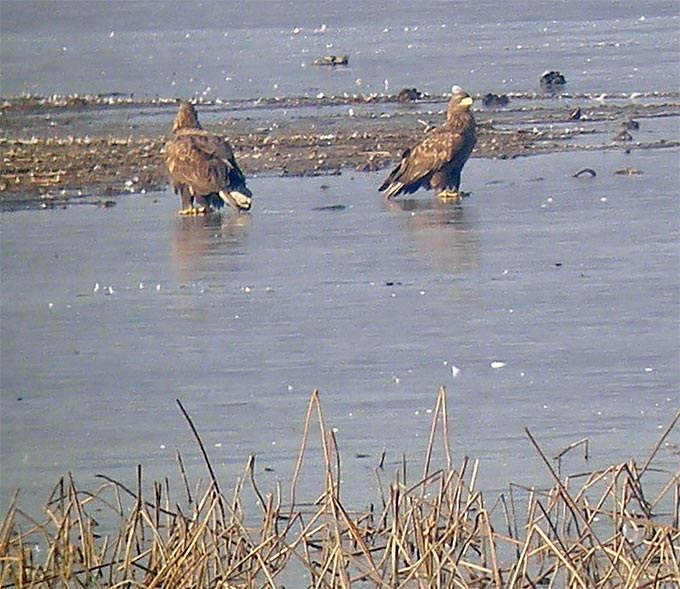
Junam Reservoir, December 3 & 5
A breezy but sunny morning visit on 3rd was once again outstanding for raptors. Between 8am and 11am no fewer than 8 raptor species were observed around the reservoir. The highlight was another (quite distant) look at the juvenile Eastern Imperial Eagle, while a male Hen Harrier flying through the area was also unusual for Junam. Also seen was the adult White-tailed Eagle, 3 Northern Goshawks, 3 Peregrines, a Common Buzzard, 2 Eurasian Sparrowhawks and 2 Common Kestrels. We later added a 9th raptor species outside the reservoir recording area when we spotted 4 Cinereous Vultures from the bus near Changwon. Otherwise the only unusual sighting on 3rd was the flock of 10 Brambling which flew overhead near the visitor centre. DLC returned alone on 5th when the reservoir was much busier with members of the public and much quieter raptor-wise. On this date, 66 White-naped Cranes were counted, the highest total so far this winter, while a male Eurasian Siskin in trees beside Dongpan Reservoir was a Korea and Junam "first" for me.
Goseong, Sokcho, Yangyang and Yeongdeok, December 3
I had some good birding in November. Winter birds began arriving in good numbers. Along the east coast of Gangwon Province many seabirds have returned for winter, including Red-breasted Mergansers, White-winged Scoters, Great Crested Grebes, Black-necked Grebes, Vega Gulls, Slaty-backed Gulls, Glaucous Gulls, Common Gulls, Black-headed Gulls, Temminck's Cormorants and Pelagic Cormorants.
I visited Namdae Cheon near Yangyang on November 13. Besides seeing 2 female Pied Harriers, about 1000 Great Cormorants flew upstream from the coast to the river, then after about half an hour they returned to the coast. I don't know if they were bathing in or drinking the freshwater. On the same day I took photos of some Vinous-throated Parrotbills. Far Eastern Larks were flying around. I flushed a Japanese Quail and several Common Pheasants from the grass closer to Yangyang.
Later on November 13 I was at Cheongcho Lagoon in Sokcho to help members of Sokcho branch of Korean Federation for Environment Movement welcome back the winter migrants. In the lagoon I saw 4 species of Grebes, 50 Great Crested, 3 Little, a Black-necked and a Horned (Slavonian). There were Mallards, Greater Scaups, Pochards, a Tufted Duck and Great Cormorants, as well as Black-tailed, Vega and Black-headed Gulls as well.
I was in Andong on November 20 downstream from Andong Subsidiary Dam. I saw Common Mergansers, Greater Scaups, Eurasian Coots, Mallards, 2 Green Sandpipers, Eurasian Teals, a Bean Goose and Spot-billed Ducks. Later the same day I drove along the river between Yeongdeok and Ganggu and saw lots of Black-tailed, Vega and Black-headed Gulls, Mallards, Little Grebes and Spot-billed Ducks. Some of the Black-headed Gulls and a Buff-bellied Pipit were foraging on the nets laid out by the river.
I did a bird survey in Ganseong on November 27. There were about 700 Mallards and 200 Spot-billed Ducks along Nam Cheon, and 400+ Red-breasted Mergansers, 40 Great Crested Grebes and 100 White-winged Scoters on the sea near the coast. In the lower reaches of Buk Cheon there were about 700 Black-tailed Gulls, 100 Vega Gulls and some Slaty-backed Gulls. There were about 400 Mallards, 7 Baikal Teal, Spot-billed Ducks and a Common Goldeneye there too. Some Great Cormorants were on the sandbar. There were very few ducks upstream from the main road. At first I thought this unusual until I saw the juvenile White-tailed Eagle fly up from the the river. Then just before I finished my survey I found a smaller raptor that was unusual for Ganseong area. It landed on a pipe on the end of a farm building and I was able to get close enough to take some photos. It turned out to be a rather pale Common Kestrel.
Late in the afternoon on November 27, I went to Ayajin and Munam to see was was on the rocks along the coast. Near the rocks at Ayajin I saw a Harlequin Duck. At Munam I counted 1460 Black-tailed Gulls, 100 Vega Gulls, 40 Slaty-backed Gulls, 2 Glaucous Gulls, 215 Mallards and 2 Black-backed Wagtails.
I went to Namdae Cheon again on November 28. There was a strong wind blowing so birds were seeking shelter and were not easy to see. There was a Peregrine Falcon on the sandbar eating a Black-tailed Gull. Gulls bathing in the lagoon included Black-tailed, Vega, Slaty-backed and a Glaucous. There were Mallards, Spot-billed Ducks, Common Mergansers, Greater Scaups, Eurasian Coots and Eurasian Teals. I saw a Eurasian Sparrowhawk further upstream.
There were almost 700 Mallards at Cheongcho Lagoon on November 28, as well as Great Crested Grebes, Greater Scaups, Black-tailed Gulls, Vega Gulls, Slaty-backed Gulls, Common Gulls and Great Cormorants. In the shrubs beside the lagoon there were some Tree Sparrow enjoying the afternoon Sun.
